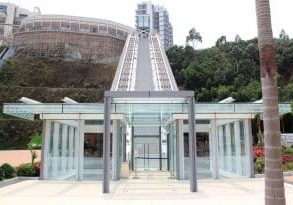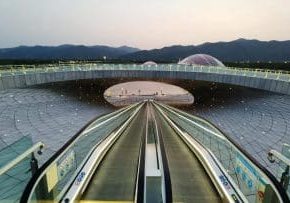Where the Rubber Meets the Road
Sponsored
When traveling on a destination-oriented elevator system, passengers might have to wait a bit longer than they may have anticipated for an elevator to arrive in order to get one that will provide them with shorter overall trips to their destinations. The average time to destination (ATTD) calculated for a destination-oriented elevator system reflects the time a passenger can expect to wait for an elevator to arrive, plus the actual time he or she will travel in an elevator to his or her desired destination.
With destination-oriented elevator systems, the 30-s. interval is no longer a valid measurement of the quality of service. Instead, each passenger’s entire elevator trip experience is considered, and the important criterion the system must be able to satisfy is the overall time it takes from when the passenger registers the demand for service until arrival at the designated floor, defined in the NEII-1 standard as the ATTD. Therefore, when evaluating the quality of elevator service for a destination-oriented elevator system, it is necessary to understand and for the elevator traffic analysis to reflect this new measure of elevator service.
The article by Ranjeet Sharma, entitled “Intelligent Transit in Modern Buildings,” in this month’s issue of ELEVATOR WORLD provides a roundup of various types of elevator traffic-management and control systems that have been developed and implemented in recent years, as well as in years past. In this article, Sharma provides the historical development of elevator dispatching and control systems, as well as the latest developments in modern destination-control systems and their hybrid alternatives.
These remarkable systems can certainly be considered the “brains” of an elevator system, but if we are to properly serve the elevator-riding public, we must also consider and pay attention to the equally important “brawn” of an elevator system. In an effort to do this, we have also provided a special focus section in this month’s issue on elevator guidance systems, titled “Rollers and Guide Rails.” In this section, we have included “Adjustable Connections to Concrete Elevator Shafts” by Chris Gage, “New Design Provisions for Anchor Channel Fastenings According to CEN” by Michael Merz and “Modelling and Analysis of Guide Rail Brackets and Attaching Parts” by Serkan Elmali, et. al.
In order for an elevator’s dispatching system to be most effective, a smooth and comfortable ride must also be provided. This can only be accomplished by means of a solid and well-designed and -installed guidance system. The articles included in this month’s focus section cover guide-rail attachments to the building, as well as the proper installation and maintenance of the elevator guides. They present provisions that must be made to ensure elevators will be provided with suitable guidance systems.
While it is important for elevator systems to be provided with first-class, state-of-the-art dispatching and control systems, it is equally important for them to also contain parts that will ensure passenger comfort and safety. This month’s issue of EW will provide guidance not only on the brains of elevator systems, but also on the part where the rubber meets the road. So, find a nice, comfortable place to read this month’s EW, and as you do so, sit back and enjoy the ride.








